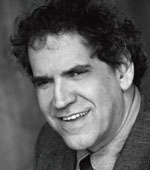By Rabbi Dr. Michael Leo Samuel

CHULA VISTA, California — Great writers of science fiction literature often have a keen intuition of what the future might bring. Whether you read H.P. Lovecraft or H. G. Wells, whose science-fiction writings makes the impossible seem almost believable. H.G. Wells’ is probably best known for his classical story, The Time Machine, which he published in 1895. His insights into the future were prescient in many ways. Wells anticipated many technological changes, e.g., wars conducted in the air; the sexual revolution; motorized vehicles, world-wars, a federalized Europe (think: European Union), the emergence of the atomic bomb. Wells especially anticipated the dystopian genre. The same could be said about Gene Roddenberry’s Star Trek series.
The coronavirus we have experienced, appears to have been anticipated by an Israeli writer named Hamutal Shabtai’s 1997 composed a novel entitled, 2020. In her dystopian story, she foresaw a time when a pandemic would cause people to turn against one another in fear. Amazingly, the writer had a clear vision of how our world would change. She tells the story about a virus that threatened to doom the human race. In her story, the pandemic began in New York, and from there it spread throughout the world. The virus was so contagious, it made any human intimate encounter deadly.
Shabtai’s psychological depiction resonates with our experience of the coronavirus. She explained in an interview, “The dynamic of a pandemic, which requires constant testing and separations, arouses the feelings that really do appear in the book in us all. The anxiety that someone you want to be close to, or whom you are close to, could end up among the ill, gives rise to a paranoia. It’s like in vampire stories, where the victim who is infected and afflicted is also the one who could infect you as if he already belongs to the forces of evil. This is what the illness does. The victim is also the demon, and fear grips all of us.”
And yet, Shabtai’s concept may have an earlier antecedent in the science-fiction writer’s Dean Koontz’s novel, The Eyes of Darkness, written in 1981. This book was listed as a best-seller by The New York Times. In his novel, Koontz wrote about a fictional biological weapon known as “Wuhan-400,” which had a 100% fatality rate. Anyone reading this book will discover that its similarities to the coronavirus end here. Unlike coronavirus,” the incubation period occurred only in four hours. The coronavirus has an incubation period anywhere between two and fourteen days. Oddly, in his 2008 edition, he referred to the “Wuhan-400,” even though in his 1981 edition he called it “Gorki-400” after the Russian city, where the virus was engineered.
In our third example, let us turn to the psychic Sylvia Browne (1936-2013) who wrote something interesting in her 2008 book, End of Days. She wrote, “In around 2020 a severe pneumonia-like illness will spread throughout the globe, attacking the lungs and the bronchial tubes and resisting all known treatments. Almost more baffling than the illness itself will be the fact that it will suddenly vanish as quickly as it arrived, attack again ten years later, and then disappear completely.”
What does Jewish tradition have to say about these things? The Arabic theologian Avicenna of the 8th century believed prophecy could be best understood as a paranormal phenomenon that enables an individual to see beyond the present. Perhaps the same can be said about “genius,” some people are endowed with gifts of the imagination that may give that person a glimpse of the future. Such a notion is evident in the dreams of Joseph in the Bible. It is not something that is beyond the realm of the possible.
The British physicist David Bohm in many of his writings discusses the idea that everything that exists is composed of energy and that this energy runs throughout the cosmos concurrently. He calls this energy as a level of consciousness that interconnects everything—from the macro to the micro; it includes an unseen (which he terms, “implicate”) and visible (an “explicate”) order. To use a more modern idiom, think of consciousness as a kind of spiritual or ethereal “Internet” that binds all beings together. Such a concept has mind-bending implications about the power of prayer or healing in general. Ultimately, the only thing that separates one human being from another is the illusion of space. Bohn calls “nonlocal reality: suggesting that there are events that are far removed from our conscious field of awareness that can have an effect on how one sees the world. To use another analogy, think of the radio. Radio waves are everywhere, but to tune in we must have a receiver.
Writers, psychics, yogis, and biblical prophets, as well as true geniuses, have something in common: an ability to be in touch with intuition. These gifts of the human psyche can sometimes enable people to see beyond the immediate present. It is one of those many gifts God has given us truly defines our uniqueness in the cosmic order.
*
Rabbi Michael Leo Samuel is spiritual leader of Temple Beth Shalom in Chula Vista, California. He may be contacted via michael.samuel@sdjewishworld.com